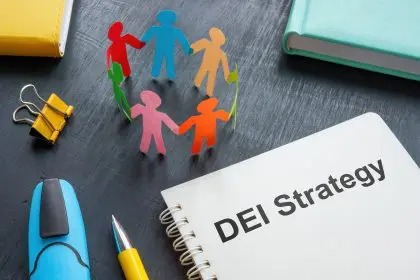Creating lasting memories that celebrate gratitude and connection

Rediscovering Christmas magic
The holiday season is a time to reflect on what truly matters, offering families a chance to create meaningful memories together. While the commercialization of Christmas can sometimes overshadow its deeper significance, certain traditions can help children understand the true spirit of the holiday. Emphasizing values such as giving, gratitude, and togetherness, these traditions allow families to embrace the magic of Christmas in ways that leave a lasting impact.
Story-centered celebrations
One of the most effective ways to teach children about the meaning of Christmas is through the power of storytelling. Sharing timeless holiday stories like A Christmas Carol or The Night Before Christmas not only brings the family together but also sparks important conversations about generosity, kindness, and the value of giving.
Reading meaningful Christmas stories helps spark discussions about generosity. These stories often highlight the importance of selflessness, encouraging children to reflect on the importance of helping others. Sharing stories also creates intimate family moments where everyone can bond over the excitement and wonder of the season.
Encouraging reflection on values. Christmas stories tend to focus on the core values of the season, such as compassion, love, and understanding. These stories can teach children valuable lessons about their role in the world and how their actions can positively impact others.
Building an appreciation for reading. As an added bonus, reading together as a family fosters a love of literature. Children are likely to remember the joy of reading Christmas stories, making them more eager to explore new books in the future.
Cultivating gratitude
Gratitude is one of the most important lessons children can learn during the holiday season. By setting aside time for family gratitude practices, families can help their children develop an appreciation for the gifts they have, both material and emotional.
Daily reflection moments. Starting the day by reflecting on what the family is thankful for helps set a positive tone for the rest of the holiday. These moments can be as simple as sharing one thing each person is grateful for, creating a practice that can continue throughout the year.
Shared thankfulness discussions. Making time for a family discussion about the things each person is thankful for encourages deeper connections and helps children understand the importance of expressing gratitude. This shared time together is a reminder to appreciate each other and the good things in life.
Written appreciation lists. Another way to encourage gratitude is through written exercises. Families can create “thankful lists” where everyone writes down things they are grateful for. These lists can become cherished keepsakes, providing a beautiful way to look back on the holiday season and reflect on the joy it brought.
Memory sharing. Sharing specific memories or experiences that brought joy throughout the year encourages children to focus on the non-material aspects of life. This reinforces the message that the holiday season is not just about receiving gifts, but also appreciating the intangible things that make life meaningful.
Empowering young givers
One of the best ways to instill the true spirit of Christmas is by involving children in the act of giving. Helping children understand the importance of giving back can foster empathy and a sense of responsibility toward others.
Shopping for those in need. Taking children along to shop for toys, clothing, or food donations for those in need provides a hands-on opportunity for them to experience the act of giving. This practice helps them understand the value of generosity and the impact they can have on others’ lives.
Creating handmade gifts. Encouraging children to make homemade gifts for family and friends not only teaches them the value of thoughtfulness but also allows them to express their creativity. Handmade gifts carry a personal touch that commercial products cannot match, and children will feel proud to give something they’ve made themselves.
Delivering donations together. Going beyond simply donating items by physically delivering them together as a family can be an emotional and impactful experience. This experience helps children connect their actions to the joy they bring others, reinforcing the idea that the holiday season is about helping those who may be struggling.
Understanding others’ needs. Helping children learn about those in need can also teach them empathy. They will gain a deeper understanding of how others live and the challenges they face, which can ultimately inspire a lifelong commitment to giving.
Experiencing giving joy. There is great joy in giving, and when children experience the happiness that comes from helping others, it can leave a lasting impression. The sense of fulfillment from making someone else’s day a little brighter is a lesson that transcends the holiday season.
Quality time focus
Christmas is also a time to strengthen family bonds, and the best way to do that is by spending quality time together. This can be done in a variety of ways, ensuring that every moment is full of connection and love.
Shared holiday activities. From decorating the tree to baking cookies, these shared moments create lasting memories. They help children feel a sense of togetherness and belonging as they contribute to the preparations for Christmas.
Game nights. Nothing brings people together like a family game night. Board games or card games encourage friendly competition and laughter, fostering a sense of unity and relaxation.
Movie traditions. Watching classic Christmas films together can become a cherished tradition, offering a chance to relax and enjoy each other’s company. These movies often carry important themes about family, kindness, and the magic of the holiday season.
Cooking together. Preparing meals together, whether it’s a festive dinner or making holiday treats, is a wonderful way to bond. Children can learn valuable life skills while also taking part in a significant holiday tradition.
Craft sessions. Crafting can also be a great family activity during Christmas. Creating decorations, ornaments, or homemade cards can be a fun way for children to express their creativity and contribute to the holiday decorations.
Community connection
Christmas is not just about family—it’s also an opportunity to connect with the wider community. Encouraging children to engage in community service activities fosters a sense of social responsibility and reminds them of the importance of helping others beyond their immediate circle.
Neighbor outreach. Taking time to connect with neighbors, especially those who may be elderly or isolated, helps teach children the value of community. Simple gestures like delivering homemade treats or offering assistance with chores can go a long way in building bonds.
Elder support. Spending time with older adults, whether through volunteer work or simply visiting them, provides children with valuable experiences that teach respect and appreciation for others.
Community service. Whether it’s helping out at a shelter, organizing a charity drive, or offering support during local holiday events, engaging in community service helps children see the positive impact of collective efforts.
Local volunteering. Volunteering at food banks or shelters is a hands-on way for children to understand the needs of their community. It’s a tangible way to show them that giving back doesn’t always require grand gestures—it’s the small acts of kindness that matter most.
Gift sharing. Exchanging gifts with others in the community, especially those who may not have the resources to purchase gifts themselves, can be a powerful way to teach children the importance of generosity.
Cultural understanding
As the world becomes more interconnected, it’s essential for children to learn about different cultural traditions. Christmas is celebrated in diverse ways across the globe, and exploring these customs can help children appreciate the richness of different cultures.
Global tradition exploration. By learning about holiday celebrations from around the world, children can gain a broader perspective on Christmas. They’ll come to understand that while the holiday may be celebrated differently, the core values of love, joy, and togetherness remain the same.
Cultural celebration learning. Sharing stories, food, and music from different cultures broadens children’s horizons and fosters respect for diverse customs. This helps them recognize the importance of inclusion and appreciation for different ways of life.
Diverse story sharing. Telling stories about how other countries celebrate Christmas allows children to see the holiday from new perspectives. It provides a chance to discuss what makes each culture’s traditions special and what common threads connect them all.
Holiday custom discussions. Discussing the various ways people celebrate Christmas around the world promotes understanding and tolerance. These conversations can be enlightening, encouraging children to think critically about culture and tradition.
Multicultural appreciation. The holiday season is the perfect time to embrace and celebrate cultural diversity. By teaching children about different holiday customs, families can cultivate a spirit of respect and appreciation for all people, regardless of background.













